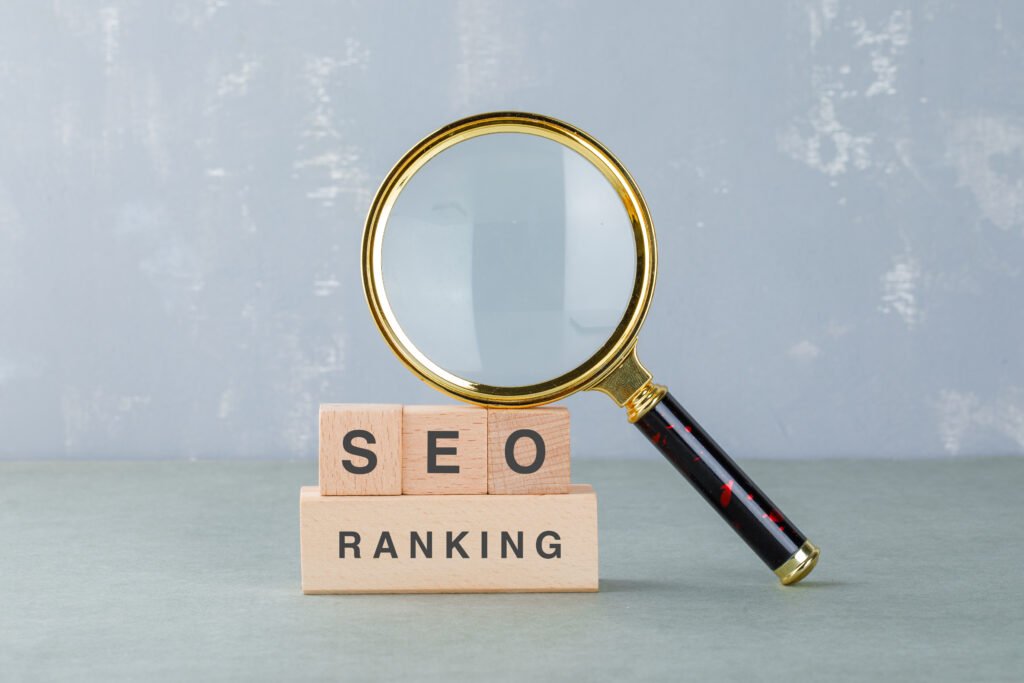What is SEO (Search Engine Optimization)? Why it’s important for Website

Introduction
In today’s digital world, where every business is trying to gain visibility online, SEO (Search Engine Optimization) has become a crucial part of any website’s strategy. It is the backbone of digital marketing that helps businesses rank higher in search engine results, attract organic traffic, and improve their visibility. Understanding what is SEO and how it works is vital to creating a successful online presence.
In this guide, we’ll break down all aspects of SEO, from its history to SEO tactics, and provide insights on how it helps your website perform better on search engines like Google, Bing, and Yahoo.
What is SEO?
SEO (Search Engine Optimization), is the process of optimizing a website to improve its visibility in search engine results pages (SERPs). The goal of SEO (Search Engine Optimization) is to make a website rank higher in search engines for relevant keywords, making it easier for users to find. It includes optimizing the content, structure, and technical elements of your website.
In simple terms, SEO (Search Engine Optimization) is about ensuring that your site ranks well on search engines when users search for terms related to your business, products, or services. The higher your website ranks for the right keywords, the more organic (unpaid) traffic you’ll attract to your site.
History of SEO
SEO (Search Engine Optimization) has evolved significantly since the inception of the web. In the early days of the internet, websites were simple, and search engines had limited algorithms. The first search engines, like AltaVista and Yahoo, ranked websites based mainly on keyword frequency and basic Meta tags.
In the late 1990s and early 2000s, Google revolutionized search engines with its algorithm, focusing on the quality of links (backlinks) pointing to a website. Over time, Google and other search engines improved their algorithms to ensure they deliver high-quality, relevant results. Today, SEO (Search Engine Optimization) incorporates complex algorithms that consider over 200 factors to rank websites, including user experience, mobile compatibility, content quality, and technical aspects.
4 Pillars of SEO
SEO (Search Engine Optimization) can be broken down into four main pillars: On-page SEO, Off-page SEO, Technical SEO, and Local SEO. Each pillar plays an essential role in optimizing your website to rank higher in search engine results.
-
On-page SEO
On-page SEO refers to the aspects of SEO (Search Engine Optimization) that are directly within your control on your website. This includes content optimization, keyword research, and improving the user experience. Some key elements of on-page SEO are:
- Content Quality: Creating valuable, informative, and engaging content that answers the user’s search intent.
- Keyword Optimization: Strategically placing keywords within titles, meta descriptions, headers, and throughout the content.
- Internal Linking: Linking to other relevant pages on your website to improve navigation and SEO (Search Engine Optimization) performance.
- Image Optimization: Ensuring images load quickly and have descriptive alt text for better search engine visibility.
-
Off-page SEO
Off-page SEO focuses on activities outside of your website that can affect your ranking. The main goal of off-page SEO is to build your website’s authority and trust. The most important component of off-page SEO is backlinking—acquiring high-quality, relevant links from other websites.
- Backlinks: Links from other reputable websites pointing to your website help establish your credibility and authority in the eyes of search engines.
- Social Media Engagement: Sharing content on social platforms can indirectly boost your website’s SEO (Search Engine Optimization) by generating traffic and brand awareness.
- Guest Blogging: Writing articles for other websites and including links back to your site.
-
Technical SEO
Technical SEO ensures that your website is optimized for search engines from a technical standpoint. This involves improving the site’s architecture, load speed, mobile-friendliness, and security. Key aspects of technical SEO include:
- Site Speed: A fast-loading website is essential for a good user experience and is favored by search engines.
- Mobile-Friendliness: With mobile traffic surpassing desktop, search engines prioritize websites that are mobile-friendly.
- Secure Website (HTTPS): Websites with HTTPS are considered secure and are preferred by Google over HTTP sites.
- XML Sitemap and Robots.txt: These files help search engines crawl and index your website’s pages more effectively.
-
Local SEO
Local SEO focuses on optimizing your website for location-based searches. It is particularly noted that Local seo for businesses is useful for physical stores or services that cater to specific geographic areas. Key components of local SEO are:
- Google My Business (GMB): Claiming and optimizing your GMB listing allows your business to appear in local search results and on Google Maps.
- Local Citations: Ensure your business information is listed in local online directories such as Yelp or Yellow Pages.
- Customer Reviews: Encouraging positive reviews on platforms like Google can improve your local rankings and trust with potential customers.
Why SEO is Important

SEO (Search Engine Optimization) is important for several reasons. It helps improve your website’s visibility, attract more traffic, and boost conversions. Without SEO (Search Engine Optimization), your website may remain hidden in search results, making it difficult for users to find you. Let’s break down why SEO (Search Engine Optimization) is so important for business :
- Increased Visibility: Websites that rank higher on search engines get more clicks and visits, driving more organic traffic.
- Cost-Effective Marketing: Unlike paid ads, SEO (Search Engine Optimization) provides long-term benefits. Once your website ranks well, you can continue to get traffic without ongoing costs.
- Builds Trust and Credibility: Higher rankings lead to increased trust from users. Websites that appear at the top are often seen as more authoritative.
- Better User Experience: SEO practices such as fast load times, mobile optimization, and quality content all contribute to a better user experience.
- Long-Term Results: SEO (Search Engine Optimization) is a long-term investment. Once you achieve good rankings, it becomes easier to maintain those rankings.
What are the Main Goals of SEO?
The main goals of SEO (Search Engine Optimization) are:
- Improving Rankings: The primary goal of SEO (Search Engine Optimization) is to rank higher on search engine results for relevant keywords.
- Increasing Organic Traffic: By ranking higher, your website will naturally attract more organic (non-paid) traffic.
- Enhancing User Experience: SEO practices help ensure that users have a positive experience when they visit your website, leading to longer visits and higher engagement.
- Building Authority and Credibility: High-quality content and backlinks help establish your website as an authority in your field.
- Generating Conversions: SEO (Search Engine Optimization) isn’t just about traffic; it’s about converting that traffic into leads or sales.
How Does SEO Work?

SEO (Search Engine Optimization) is the practice of optimizing a website so that it ranks higher on search engines like Google, Bing, and Yahoo. This is done by ensuring the website meets various criteria set by search engines’ algorithms. These criteria include keywords, backlinks, content quality, site speed, mobile-friendliness, and other factors. Here’s a breakdown of how SEO (Search Engine Optimization) works:
-
Optimizing Content for Keywords
One of the primary factors for SEO (Search Engine Optimization) is optimizing the content on your website for relevant keywords. Keywords are the terms or phrases that users enter into search engines to find information. For example, if you own a bakery in New York, a relevant keyword might be “best bakery in New York.” You should optimize your website’s content by incorporating these relevant keywords in titles, headings, body text, meta descriptions, and image alt texts.
-
Backlinks
Search engines evaluate the authority of your website using backlinks. A backlink is a link from one website pointing to your site. The more high-quality, relevant backlinks you acquire from authoritative websites, the more trust search engines will place on your site. Backlinks act as “votes of confidence” in your content. They show search engines that other websites trust and value your content.
-
Content Quality
Search engines prioritize content that provides value to users. High-quality, original, informative, and engaging content helps search engines understand that your website is a reliable source of information. Content that answers users’ queries comprehensively and is regularly updated has a better chance of ranking higher.
-
Site Speed
The speed at which your website loads is a crucial factor for both user experience and SEO (Search Engine Optimization). Websites that load quickly tend to rank higher because they provide a better experience for visitors. Slow websites can lead to high bounce rates, meaning visitors leave the site quickly, which signals to search engines that the site is not delivering quality content or user experience.
-
Mobile-Friendliness
With the increase in mobile internet usage, search engines like Google give priority to websites that are optimized for mobile devices. A mobile-friendly website adapts to different screen sizes and ensures that the content is easy to read and navigate on smartphones and tablets. Search engines reward sites that cater to mobile users with higher rankings.
-
User Experience (UX)
Search engines also analyze user behavior metrics such as bounce rate, time on site, and click-through rate. If users spend time on your site and engage with the content, it indicates to search engines that your website is valuable. A positive user experience includes easy navigation, clear layout, and responsive design.
-
Technical SEO
Behind-the-scenes aspects like XML sitemaps, robots.txt files, clean URL structure, and secure connections (HTTPS) contribute to technical SEO. These elements help search engines crawl and index your website efficiently. Websites that are technically sound are more likely to rank higher.
How Do Search Engines Work?
Search engines like Google use a multi-step process to deliver the most relevant search results to users. The three main steps involved are crawling, indexing, and ranking. Here’s a deeper dive into how each of these steps works:
-
Crawling
Crawling is the process where search engines use bots (also known as crawlers or spiders) to scan the internet and discover new and updated pages. These bots follow links from one webpage to another and collect information about these pages.
Search engines employ crawlers to traverse the web and “crawl” through websites to find content such as blog posts, product pages, images, and videos. Crawlers are constantly working to gather fresh data on the internet to provide the most up-to-date search results for users.
To ensure that search engines can crawl your website effectively, it’s important to have an optimized robots.txt file that indicates which pages should be crawled and which ones should not. Additionally, creating an XML sitemap helps search engines find and index all the important pages on your site.
-
Indexing
Once a search engine crawler has discovered a webpage, the next step is indexing. Indexing refers to the process of storing and organizing the data that crawlers have gathered. Essentially, indexing is where the search engine takes all the pages it has crawled and adds them to its massive database (called the index).
When a page is indexed, search engines analyze the content and metadata (such as keywords, title tags, and descriptions) to understand what the page is about. This helps search engines match the page to relevant search queries.
However, not every page that is crawled will necessarily be indexed. Pages that are poorly optimized, lack valuable content, or have technical issues may not be included in the search engine’s index.
-
Ranking
Ranking is the process of determining where a particular webpage will appear in search engine results for a given query. Search engines use sophisticated algorithms to rank pages based on hundreds of factors, including keyword relevance, page authority, backlinks, user engagement, and content quality.
When you enter a search query into Google or another search engine, the search engine reviews its index to find pages that match the search terms. It then ranks those pages based on which ones it believes provide the best answer or most valuable content.
Search engines evaluate several ranking factors to determine this, including:
- Keyword relevance: Does the page’s content match the search query?
- Backlinks: Does the page have high-quality, relevant backlinks?
- Page authority: How authoritative and trustworthy is the website?
- User signals: Does the page offer a positive user experience?
- Content quality: Is the content valuable, original, and comprehensive?
How to Get Started with SEO
Getting started with SEO (Search Engine Optimization) doesn’t have to be complicated. Follow these simple steps to optimize your website:
1. Conduct Keyword Research
Identify the keywords your audience is searching for using tools like Google Keyword Planner or SEMrush. Focus on both short-tail and long-tail keywords relevant to your business.
2. Optimize On-Page SEO
Create high-quality content optimized for your target keywords. Use keywords naturally in headings, titles, and body content. Don’t forget to optimize images and add internal links to relevant pages.
3. Build Backlinks
Acquiring backlinks from reputable websites boosts your authority. Reach out to industry influencers for guest posts, create shareable content, and monitor your backlinks with tools like Ahrefs.
4. Improve Technical SEO
Ensure your website is fast, mobile-friendly, and secure (HTTPS). Use an XML sitemap for easier crawling, and fix any broken links to improve user experience and SEO.
5. Monitor Your Progress
Track your SEO performance using Google Analytics and Google Search Console. Regularly review keyword rankings, site traffic, and user behavior to refine your strategy.
SEO Ranking Factors

Several factors influence your website’s ranking in search engine results. Some of the most important ranking factors include:
- Content Quality: Content that is relevant, informative, and engaging ranks better.
- Backlinks: High-quality backlinks from reputable websites improve your site’s authority and trustworthiness.
- Site Speed: Faster websites provide a better user experience and rank better.
- Mobile-Friendliness: Websites that are optimized for mobile devices rank better due to Google’s mobile-first indexing.
- User Engagement: Metrics like bounce rate, time on site, and page views can influence rankings.
Algorithm Updates and Their Impact
How SEO Algorithms Rank Your Site

Search engines like Google use complex algorithms to evaluate websites and determine their ranking in search results. The algorithm analyzes various factors, including keyword relevance, content quality, site performance, and user behavior, among others.
When you optimize your website by following SEO best practices, you improve your chances of meeting these ranking criteria. Search engines then crawl, index, and rank your site accordingly. Consistently optimizing your website according to these SEO guidelines will gradually improve its position on search engine results pages (SERPs), ultimately driving more organic traffic to your site
Constant Updates to Search Engine Algorithms
Search engines are continuously refining their algorithms to deliver more accurate and relevant results. Google alone updates its algorithm several times a year, and many of these updates significantly impact how websites rank. Some updates focus on penalizing websites that engage in unethical SEO tactics (like keyword stuffing or buying backlinks), while others enhance the search engine’s ability to understand user intent and provide better results.
For example, Google’s Panda update targeted low-quality, thin content, while the Penguin update penalized sites that had unnatural link profiles. More recent updates, like BERT, focus on improving the search engine’s understanding of natural language and user intent.
To stay ahead of these changes, it’s important to keep your SEO strategy up-to-date by adhering to best practices, focusing on high-quality content, and ensuring that your website provides a great user experience.
Conclusion
SEO (Search Engine Optimization) is a powerful tool for improving your website’s visibility, attracting more organic traffic, and generating conversions. By understanding the various aspects of SEO (Search Engine Optimization), from on-page to off-page, technical, and local SEO, you can create an effective SEO strategy for your business.
By optimizing your website and staying updated with the latest SEO practices, you can ensure that your site ranks higher and remains competitive in the ever-evolving digital landscape. Choosing a right SEO Company is important for make your business effective and increase more traffice. AGTC, as a leading seo company in Salem, Oregon provide seo services that drives your traffic and increase impressions. We optimize your website for your Digital Growth. Contact us today for free consultation
FAQ
-
What is SEO?
SEO stands for Search Engine Optimization, a process that improves your website’s visibility on search engines, helping it rank higher and attract more organic traffic.
-
How long does it take to see SEO (Search Engine Optimization) results?
SEO (Search Engine Optimization) is a long-term strategy. Typically, you can start seeing results within 3-6 months, but significant improvements may take longer, depending on competition and website health.
-
What are the main SEO tactics?
On-page SEO, off-page SEO, technical SEO, and local SEO are the key tactics. These strategies focus on optimizing your website’s content, gaining quality backlinks, improving site performance, and targeting location-based searches.
-
How does SEO impact website traffic?
SEO (Search Engine Optimization) helps improve your site’s rankings on search engines, making it easier for users to find you. The more optimized your site is, the more organic traffic you will attract.
-
How can I improve my SEO (Search Engine Optimization) ranking?
Focus on creating high-quality content, acquiring authoritative backlinks, improving website speed, and ensuring your site is mobile-friendly.








